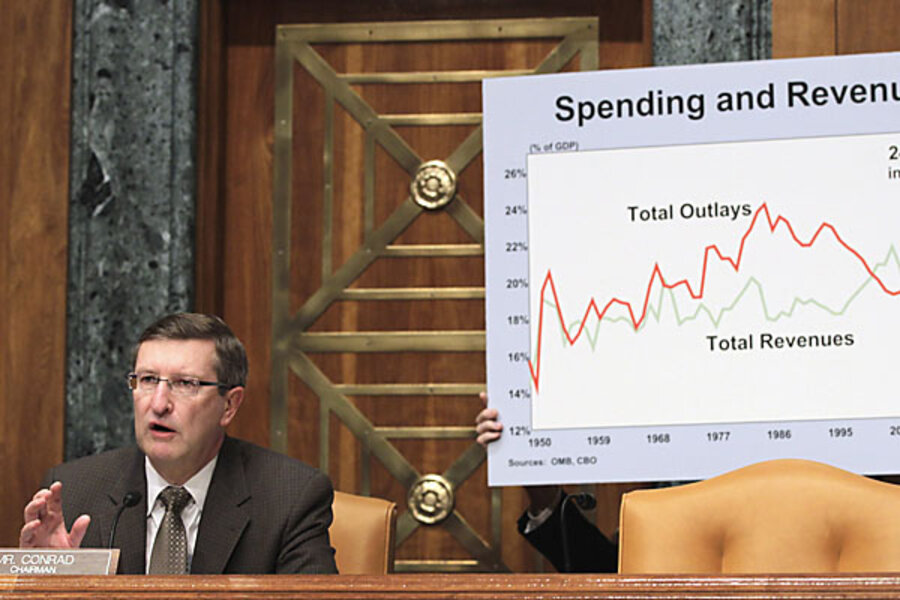What it will take to balance the budget
Loading...
Three related issues dominate budget talk in Washington these days: eliminating the deficit, cutting spending, and reforming the tax system. Achieving the first will require accepting painful doses of the second and designing the third so we raise more revenue. No easy tasks there.
The difficulty shows clearly in a graph I prepared for a recent talk for the Tax Section of the American Bar Association (slides are available here) . The graph plots spending and revenues using the latest budget estimates from the Congressional Budget Office. Balancing the budget means getting to the dark blue 45-degree line where spending matches revenues. The further northwest of the line, the bigger the deficit.
For most of the past four decades, the federal budget has been above that line. Spending has averaged just under 21 percent of gross domestic product (GDP), well above the 18 percent average for revenues. Only for a few years, from 1998-2001, have revenues fully paid the government’s bills—those four lonely dots below the diagonal line. And the last few years have found us well above the balanced budget line with deficits around 9 percent of GDP.
Those huge recent deficits result mainly from reduced tax revenues due to the economic collapse and counter-cyclical policies on both the spending and the tax side. While the CBO baseline projects a substantially better deficit picture in coming years, much of the improvement results from the optimistic assumption that Congress leaves tax law alone. Specifically that means letting all of the temporary tax cuts extended by the December compromise legislation expire and discontinuing the annual “patch” to the AMT. Under those assumptions, CBO projects that revenues will increase from 15 percent of GDP this fiscal year to 20 percent by FY2014, leaving us still well above the balanced budget line in the graph.
And that is the good news. The longer-term outlook is even more troubling as demographics and health care costs that are rising faster than the overall economy put unsustainable pressures on the level of spending.
In order to have a credible path toward fiscal sustainability, we must move beyond the bickering about whether to extend the 2001-2003 tax cuts and for whom. Even with sizeable and painful spending cuts, the Federal Government will need more revenue than the 18 percent historical average. Policymakers must look to more comprehensive reforms, including base-broadening and exploring new revenue sources.
As Milton Friedman reminded us, “to spend is to tax.” We can’t keep pretending that spending and revenue are independent policy variables. At day’s end, we have to raise enough revenue to pay for the spending we choose. That said, political and ideological differences complicate any decisions on how much to cut spending and raise taxes to achieve long-run balance. As we consider fundamental tax reform, we should seek a system that not only can raise revenue efficiently, but also is flexible enough to adapt to changing spending priorities that our democratic process will ultimately determine.
No easy task indeed.
Add/view comments on this post.
------------------------------
The Christian Science Monitor has assembled a diverse group of the best economy-related bloggers out there. Our guest bloggers are not employed or directed by the Monitor and the views expressed are the bloggers' own, as is responsibility for the content of their blogs. To contact us about a blogger, click here. To add or view a comment on a guest blog, please go to the blogger's own site by clicking on the link above.





